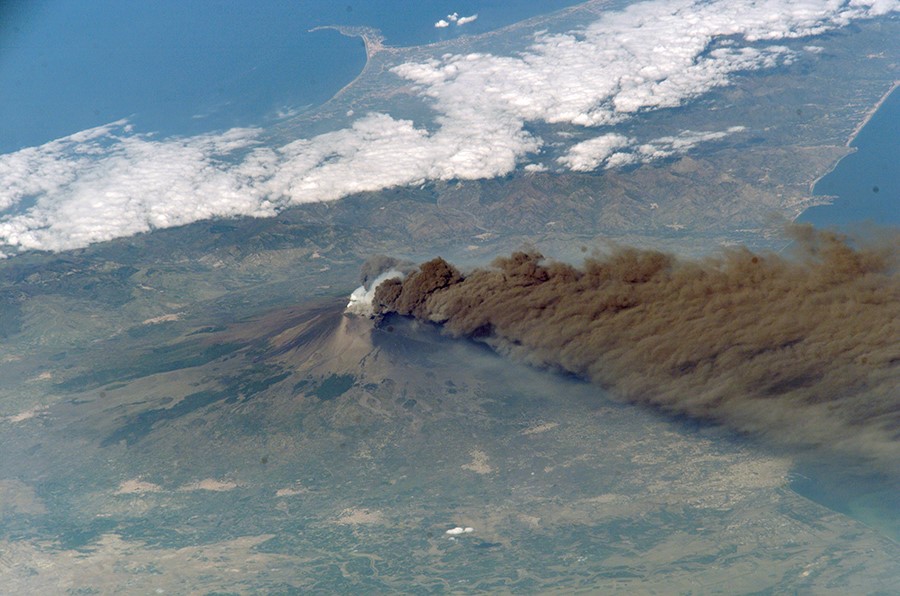The 2001 eruption of Etna was a turning point in the study of volcanoes, not only for the Italian scientific community but for the whole world.
The 2001 eruption saw the simultaneous presence of 5 active mouths in different areas of the volcano. Strombolian activity, with lava flow emission, has been a rather common phenomenon in the last 40 years in the south-eastern summit crater, accompanied by lava flow emission at 2800 metres above sea level on the western edge of the Valle del Bove and at 2900 metres in the Valle del Leone, as well as by a mouth at 2100 metres in the Monti Calcarazzi. It led to the drastic reduction of most of the tourist/commercial activities in the Rifugio Sapienza area.
Finally, a mouth opened up right in the viewpoint area, where there was strong Strombolian activity with intense ash. This mouth slowly built the Cratere Laghetto, which is clearly visible from the viewpoint, causing an accumulation of almost one metre of ash in the nearby city of Catania, with serious consequences on the road network, air transport and commercial and agricultural activities in the area. To get an idea of the amount of ash emitted and the height reached by the eruptive column, we need only consider that the ash from the Cratere Laghetto reached Greece and the northern coasts of Africa.
Until that moment, Etna, despite being monitored, took the scientific community by surprise, which did not foresee such intense activity at the same time, in different areas of the volcano. Since this eruption, alongside Stromboli, Etna has become one of the most monitored active volcanoes in the world. Today, thanks to all the studies following this eruption, it is possible to predict the probable and imminent eruption with a few hours’ notice, and it is possible to limit ash damage on air transport thanks to models that integrate the height of the eruptive column with the current weather conditions. This is a further demonstration of how Etna is, for all intents and purposes, a natural laboratory for science, not just volcanology.